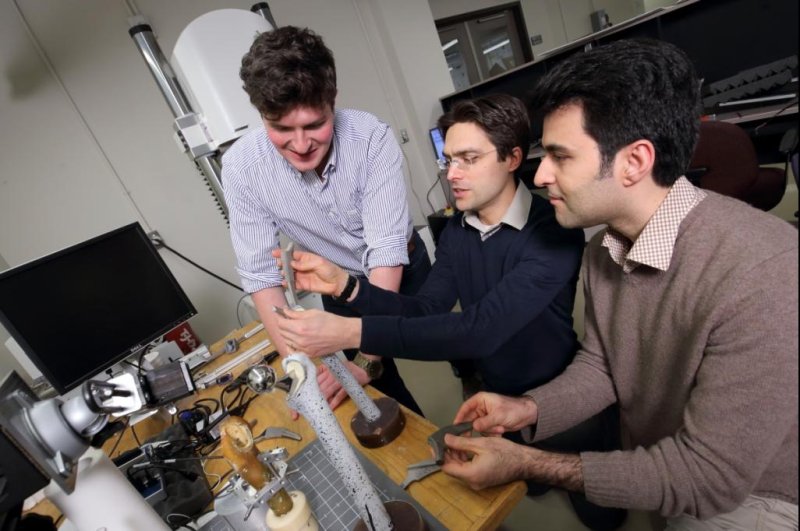MONTREAL, Nov. 2 (UPI) -- Scientists at McGill University have developed hip replacements they say last longer and create fewer problems than conventional models.
The new hip replacements contain an implant designed to "trick" the host bone into remaining alive by imitating the porosity of real bones. While the product is actually less dense than its counterparts, the designers stress it is just as effective.















